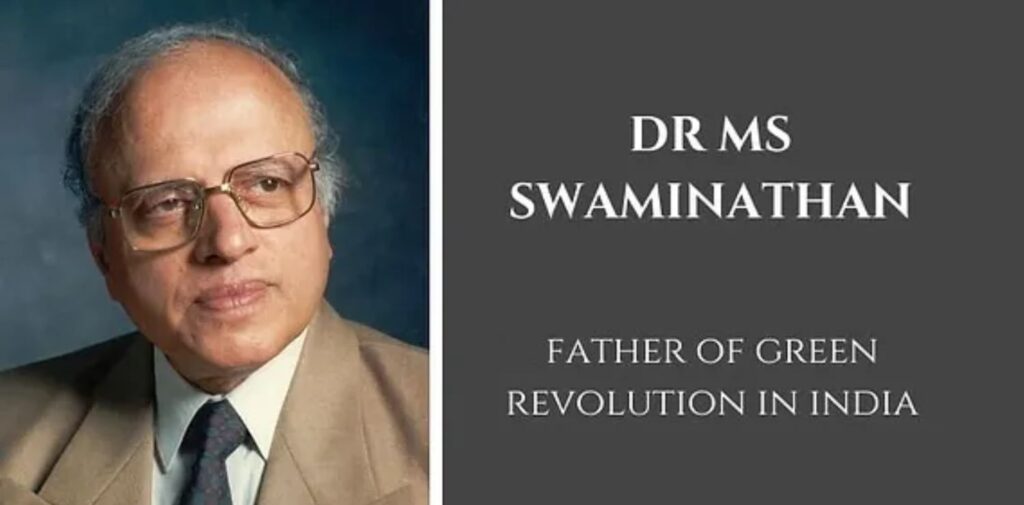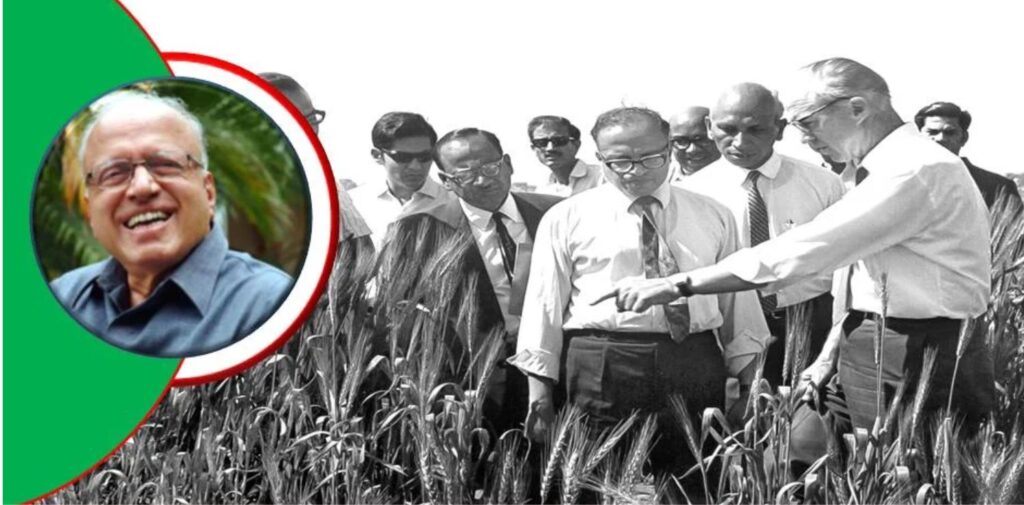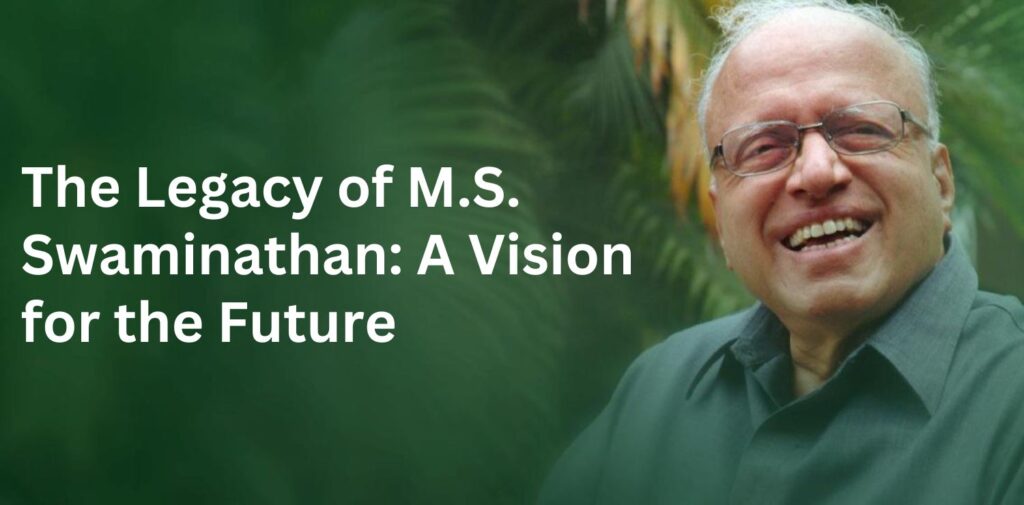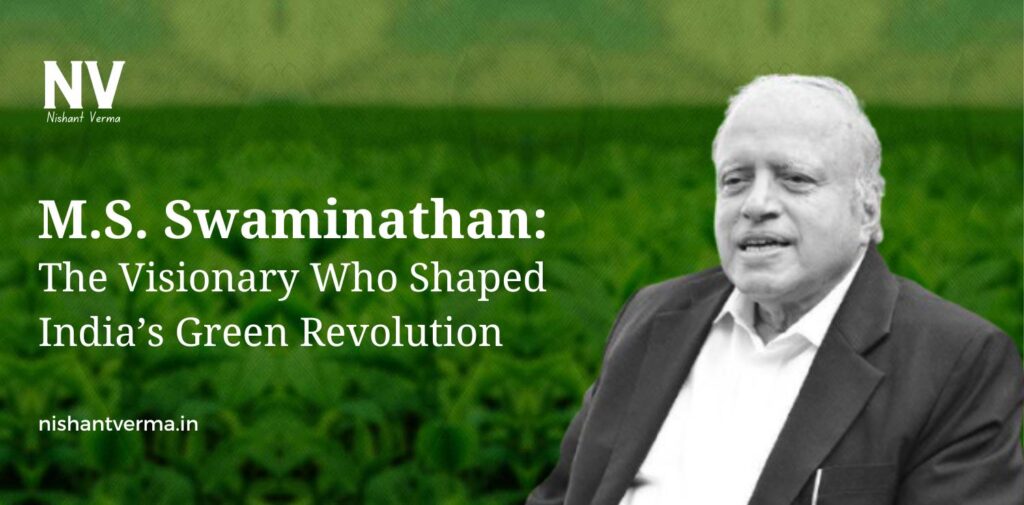In the 1960s, India was facing a major crisis. The country was struggling with food shortages, widespread famine, and the looming threat of starvation. The population was growing rapidly, but agricultural production was stagnating. It was during this challenging time that Dr. M.S. Swaminathan, an agricultural scientist, came forward with a solution that would forever change the landscape of Indian agriculture. His work led to the Green Revolution in India, a period of dramatic transformation in food production, and he became known as the architect of this agricultural revolution.
Dr. Swaminathan’s contributions not only helped India become self-sufficient in food production but also laid the foundation for modern agricultural practices in the country. This article explores how his visionary work revolutionized agriculture in India, what challenges he faced, and the lasting impact of his contributions on Indian society.
The Early Years: A Scientist with a Vision
M.S. Swaminathan was born on August 7, 1925, in the village of Kumbakonam in Tamil Nadu. Growing up in rural India, he was well aware of the agricultural challenges faced by farmers. He completed his undergraduate studies in agriculture at the Tamil Nadu Agricultural University, followed by a master’s degree from the Indian Agricultural Research Institute (IARI), New Delhi. His further studies abroad, including a doctorate from the University of Cambridge, exposed him to the latest developments in agricultural science and technology.
Dr. Swaminathan’s early exposure to the world of agriculture, combined with his advanced scientific education, gave him the knowledge and skills needed to tackle India’s pressing food security issues. But what set him apart from other scientists was his deep empathy for the farmers and his ability to think beyond just research. He wanted to improve the lives of millions of people by making farming more productive and sustainable.

The Green Revolution: The Turning Point in Indian Agriculture
In the early 1960s, India was suffering from food insecurity. The country was heavily dependent on food imports, and famines in regions like Bengal had led to loss of life and widespread suffering. The Green Revolution, which started around the mid-1960s, was a response to these challenges. But what exactly was the Green Revolution?
The Green Revolution was a set of agricultural reforms and innovations aimed at increasing food production, particularly in wheat and rice. The revolution was built around high-yielding variety (HYV) seeds, increased use of chemical fertilizers, and pesticides, and improved irrigation techniques. While these strategies had already been developed in other parts of the world, India lacked the infrastructure and expertise to implement them effectively. This is where M.S. Swaminathan came in.

M.S. Swaminathan’s Role in the Green Revolution
Dr. Swaminathan’s role in India’s Green Revolution can be summed up in one word: leadership. His expertise in plant genetics and his ability to adapt global agricultural knowledge to Indian conditions made him a key figure in transforming Indian agriculture.
- Introducing High-Yielding Varieties (HYVs): One of the key elements of the Green Revolution was the introduction of high-yielding variety (HYV) seeds. These seeds were developed to produce more crops in less time, a crucial factor when the country’s population was rapidly increasing. Dr. Swaminathan played a pivotal role in bringing these seeds to India, particularly in wheat and rice. He worked closely with international organizations like the International Rice Research Institute (IRRI) and International Maize and Wheat Improvement Center (CIMMYT) to import these high-yielding seeds, especially the varieties developed by scientists like Norman Borlaug, who is often credited as the father of the Green Revolution. The introduction of HYVs like IR8 rice and Kalyan Sona wheat resulted in significantly higher yields per acre. Farmers began to harvest more crops, which helped increase the overall food supply in India. Swaminathan’s work ensured that these seeds were adapted to suit Indian soil and climatic conditions, making them more effective.
- Improving Irrigation and Water Management: A crucial aspect of the Green Revolution was improving irrigation techniques. Dr. Swaminathan recognized that without proper water management, even the best seeds and fertilizers wouldn’t be able to achieve their potential. He worked to expand irrigation facilities, encouraging the use of modern irrigation systems like drip and sprinkler irrigation. He also promoted the idea of water-use efficiency, teaching farmers how to better manage their water resources. This was especially important in states like Punjab, Haryana, and Uttar Pradesh, where agriculture was heavily dependent on irrigation.
- Promoting Sustainable Agriculture Practices: While the Green Revolution brought tremendous benefits in terms of food production, it also led to concerns about the long-term sustainability of these practices. The heavy use of chemical fertilizers and pesticides raised environmental concerns, and the overuse of groundwater for irrigation started to deplete water resources in some areas. Dr Swaminathan was one of the first to recognize these challenges and advocated for sustainable agricultural practices. He promoted organic farming, crop rotation, and soil health as ways to maintain agricultural productivity without harming the environment. His vision was that agriculture should not only be productive but also ecologically sustainable. He also emphasized the importance of biodiversity in farming systems, arguing that maintaining a variety of crops was key to ensuring resilience against pests, diseases, and climate change.
- Strengthening Agricultural Policies: M.S. Swaminathan didn’t just focus on scientific research; he also worked to influence agricultural policies. As a key advisor to the Indian government, he played an important role in shaping policies that would benefit farmers and make agriculture more profitable. One of his major contributions was his work on food security policies, which helped ensure that India had enough food for its growing population. He supported the Public Distribution System (PDS), which made food available to the poor at subsidized rates.
Additionally, Swaminathan advocated for the Minimum Support Price (MSP) for crops, ensuring that farmers were guaranteed a fair price for their produce. This helped protect farmers from market fluctuations and gave them the confidence to adopt new technologies.
Challenges and Criticism of the Green Revolution
While the Green Revolution brought many benefits, it also faced some challenges and criticisms. The benefits were not evenly distributed across all regions and farmer communities. Large, wealthy farmers were able to invest in new technologies like HYVs, fertilizers, and irrigation systems, while smaller farmers were often left out.
Additionally, the Green Revolution contributed to environmental degradation, as the excessive use of chemical fertilizers and pesticides led to soil depletion, water pollution, and loss of biodiversity in some areas.
Dr. Swaminathan, however, always acknowledged these challenges and worked to address them. His later efforts focused on making the Green Revolution more inclusive and sustainable, and he became an advocate for agroecology and climate-smart agriculture.

The Legacy of M.S. Swaminathan: A Vision for the Future
Today, M.S. Swaminathan is widely regarded as one of the greatest agricultural scientists in the world. His work during the Green Revolution helped India transition from a food-deficient nation to a food-surplus one. Under his leadership, India’s food grain production increased significantly, helping lift millions out of poverty and hunger.
Even after the Green Revolution, Dr. Swaminathan continued his work, advocating for sustainable agriculture, food security, and climate resilience. He was the founder-chairman of the M.S. Swaminathan Research Foundation (MSSRF), which works to promote agricultural research and rural development.
Dr. Swaminathan’s vision for a world where agriculture can feed the growing population without harming the environment has become even more relevant today, as we face the challenges of climate change and resource depletion.
Conclusion: The Architect of India’s Agricultural Transformation
M.S. Swaminathan’s contributions to Indian agriculture are immeasurable. His role in the Green Revolution transformed India’s food production, alleviated hunger, and made India self-sufficient in food. He didn’t just provide solutions for today; he also laid the groundwork for future agricultural practices that are sustainable and resilient.
Dr. Swaminathan’s legacy is a reminder that innovation, when combined with a deep understanding of people’s needs, can bring about real change. His work continues to inspire future generations of scientists, policymakers, and farmers to build a more food-secure and sustainable world.




